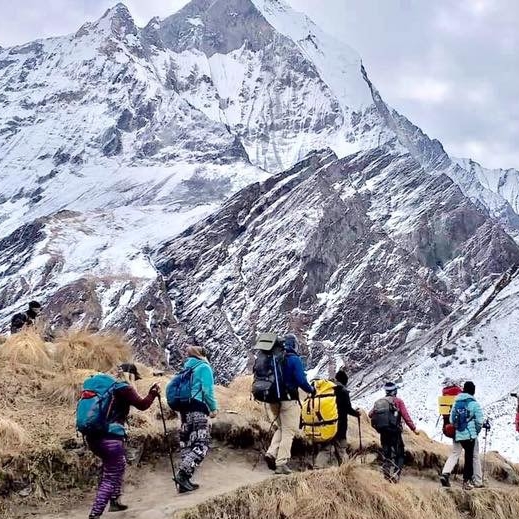
Trekking in Nepal is an exhilarating and unforgettable experience, attracting thousands of adventure seekers and nature enthusiasts from around the world. Nestled in the heart of the Himalayas, Nepal offers a diverse range of trekking routes that lead to stunning landscapes, picturesque villages, ancient monasteries, and towering peaks. Here's a detailed overview of trekking in Nepal:
Popular Trekking Regions:
Everest Region: Home to the world's highest peak, Mount Everest (8,848 meters / 29,029 feet), the Everest region is one of the most iconic trekking destinations in Nepal. The trek to Everest Base Camp is a classic route that provides breathtaking views of Everest, along with other prominent peaks like Lhotse, Nuptse, and Ama Dablam.
Annapurna Region: Known for its diverse landscapes and abundant natural beauty, the Annapurna region offers various trekking routes. The Annapurna Circuit and Annapurna Base Camp treks are popular choices, providing mesmerizing views of Annapurna massif, Machhapuchhre (Fishtail), and Dhaulagiri.
Langtang Region: Located close to Kathmandu, the Langtang region offers treks with stunning views of Langtang Lirung and other peaks. The Langtang Valley trek is a rewarding journey that takes you through lush forests, serene valleys, and traditional Tamang and Sherpa villages.
Manaslu Region: Trekking around Mount Manaslu (8,163 meters / 26,781 feet) is a remote and challenging adventure. The Manaslu Circuit Trek is renowned for its off-the-beaten-path experience and cultural encounters with local ethnic groups.
Upper Mustang Region: If you seek a unique trekking experience, Upper Mustang is the place to go. Known as the "Last Forbidden Kingdom," this region offers a rare opportunity to explore ancient Tibetan culture and landscapes resembling the Tibetan Plateau.
Best Time for Trekking:
The best time for trekking in Nepal is during the two main trekking seasons:
Spring (March to May): This season offers mild temperatures and vibrant rhododendron blooms along the trails.
Autumn (September to November): This season provides clear skies, excellent visibility of mountains, and pleasant weather for trekking.
Permits:
To trek in most regions of Nepal, you will need specific permits. The most common ones are the TIMS (Trekkers' Information Management System) card and the Annapurna Conservation Area Permit (ACAP) or Sagarmatha National Park Permit, depending on your chosen trekking destination.
Accommodation:
Teahouses and lodges are available along popular trekking routes, providing basic but comfortable accommodation and meals. In more remote regions, you might need to camp and carry your own camping gear.
Physical Fitness and Difficulty:
The difficulty of the trek depends on the region and the specific route chosen. Some treks are relatively easy and suitable for beginners, while others are more challenging and demand a good level of physical fitness. It's essential to choose a trek that matches your abilities and preferences.
Cultural Experience:
Trekking in Nepal offers a unique opportunity to immerse yourself in the rich local culture. You'll encounter diverse ethnic communities like Sherpas, Gurungs, Tamangs, and Thakalis, each with its own distinct traditions, language, and lifestyle.
Safety Considerations:
While trekking in Nepal is generally safe, it's crucial to be prepared for the challenges that come with high-altitude trekking. Altitude sickness is a real concern, and trekkers should acclimatize properly and be aware of the symptoms. Hiring a local guide is highly recommended, as they can help navigate the trails, arrange accommodations, and provide valuable insights into the local culture.
